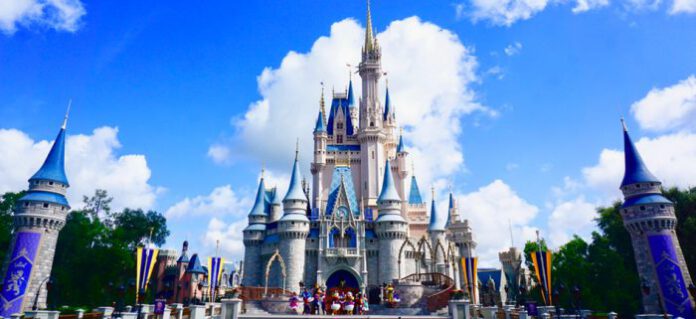Artnewspress: As the push to reopen intensifies, the theme park industry has released a set of guidelines to deal with the future post-coronavirus world. On top of this, Florida is about to implement a full “Phase 1” reopening, and is encouraging theme parks in the Sunshine State to submit reopening plans for approval.
I’ve never been one for theme parks to begin with, so the thought of going to a theme park now, after the outbreak of the coronavirus pandemic, seems absolutely unthinkable to me. But I know there are plenty of people who love going to parks – not to mention plenty of employees who are struggling and hope to get back to work. This means some steps are going to have to be implemented to avoid future problems. Especially now that places like Florida are encouraging theme parks to submit reopening plans for approval.
We now have some of those plans (via MiceChat) directly from the Association of Amusement Parks and Attractions (IAAPA) trade organization, and while they all seem necessary, they also sound like they’re going to suck all the fun out of going to a theme park. Which makes me wonder: shouldn’t everyone just wait a little longer? I think so – but hey, what do I know?
In the meantime, here are the guidelines:
Employees
- Separate work teams into groups to keep employees scheduled on different days in case one person tests positive for COVID-19. The team strategy allows operations to continue if one entire team or workgroup must be quarantined.
- Wash and sanitize shared employee uniforms, costumes, equipment and props.
Security Checkpoints
- Post signs at entrances notifying visitors of risks associated with gathering in public spaces.
- Reduce the number of personal items visitors can bring into the park. Require all items fit into a clear plastic bag for touchless inspections.
- Establish guidelines to deal with visitors who refuse to wear protective masks or want to wear ineffective or offensive face coverings.
Not Recommended Procedures
- Temperature checks are not recommended due to the inconsistent nature of readings, particularly in outdoor environments. Visitors with COVID-19 could be asymptomatic and have a normal body temperature. Some government agencies may nonetheless require temperature checks.
- Protective gloves are not recommended due to their ability to spread germs and the false sense of security they create. Frequent hand washing is preferable.
Sick Visitors
- Establish a containment room or isolation area for visitors or employees with potential COVID-19 symptoms. Move symptomatic visitors and their immediate party to the containment area for further assessment.
- Deny entry to symptomatic visitors and their immediate party. Offer guidance to symptomatic visitors regarding medical care or call an ambulance for visitors in distress.
Sanitization & Cleanliness
- Create “Clean Team” uniforms for employees cleaning the parks to make sanitizing efforts visible to visitors. Remind visitors of recent cleanings and sanitization.
- Dedicate employees to clean and disinfect restrooms frequently.
- Assign employees to monitor restroom capacity to uphold physical distancing guidelines.
- Disable every other toilet to maintain physical distancing protocols in restrooms.
- Disable water fountains and other common use items if permitted by the health department.
- Establish a tip line or create an app function for visitors to report health, safety or cleanliness concerns to management.
Rides & Attractions
- Stagger attraction opening times based on capacity or budget concerns.
- Eliminate single-rider lines designed to fill empty seats (an unnecessary practice in the age of social distancing).
- Require visitors to wear protective face masks on rides. The dynamics of some attractions may prohibit the use of masks.
- Sanitize storage areas where riders stow their personal belongings while on a roller coaster or other attraction.
- Allow employees to use their feet or knees to physically verify safety gates are locked and secured.
- Sanitize ride control and dispatch panels between each employee rotation.
Shows & Parades
- Increase the number of show performances due to reduced seating capacity.
- Make end-of-show announcements asking visitors to exit the venue by section or row to reduce crowding.
- Develop character stage appearances or “drive-by” vehicle experiences to provide visibility from a distance.
Close & Cumbersome Attractions
- Close play areas, interactive mazes, touch pools and props-based experiences due to physical distancing or sanitation concerns.
- Close attractions that require VR headsets, 3D glasses, helmets or other accessories until cleaning protocols are established.
- Reevaluate time-consuming attractions that require personal harnessing like ropes courses, climbing walls and steel-cable swing rides.
Food & Beverage
- Eliminate self-service food operations like buffets and salad bars.
- Assign employees to pour beverages at self-service stations to minimize contact and keep equipment clean and sanitary. Use a new cup for each refill.
- Sanitize vending machines frequently. Offer sanitizing wipes in vending areas.
Shopping
- Add signs reminding visitors to only handle merchandise they intend to purchase.
- Allow guests to place purchased items into shopping bags themselves at register checkout.
- Remove doors and other high-touch surfaces if possible and permitted.
- Assign employees to sanitize point-of-sale terminals after each transaction.
























